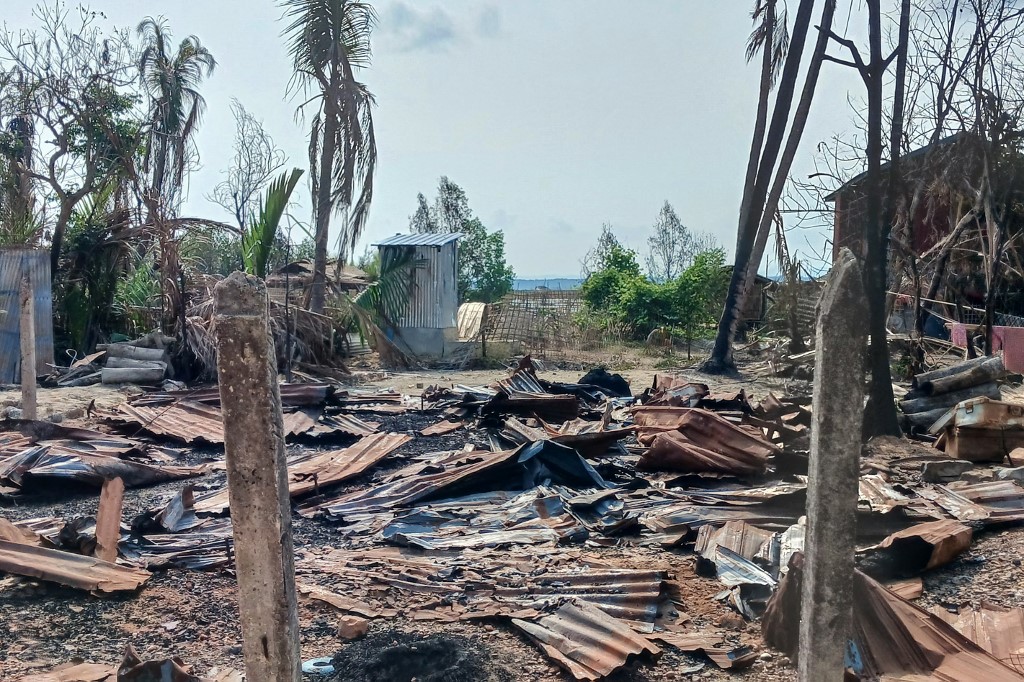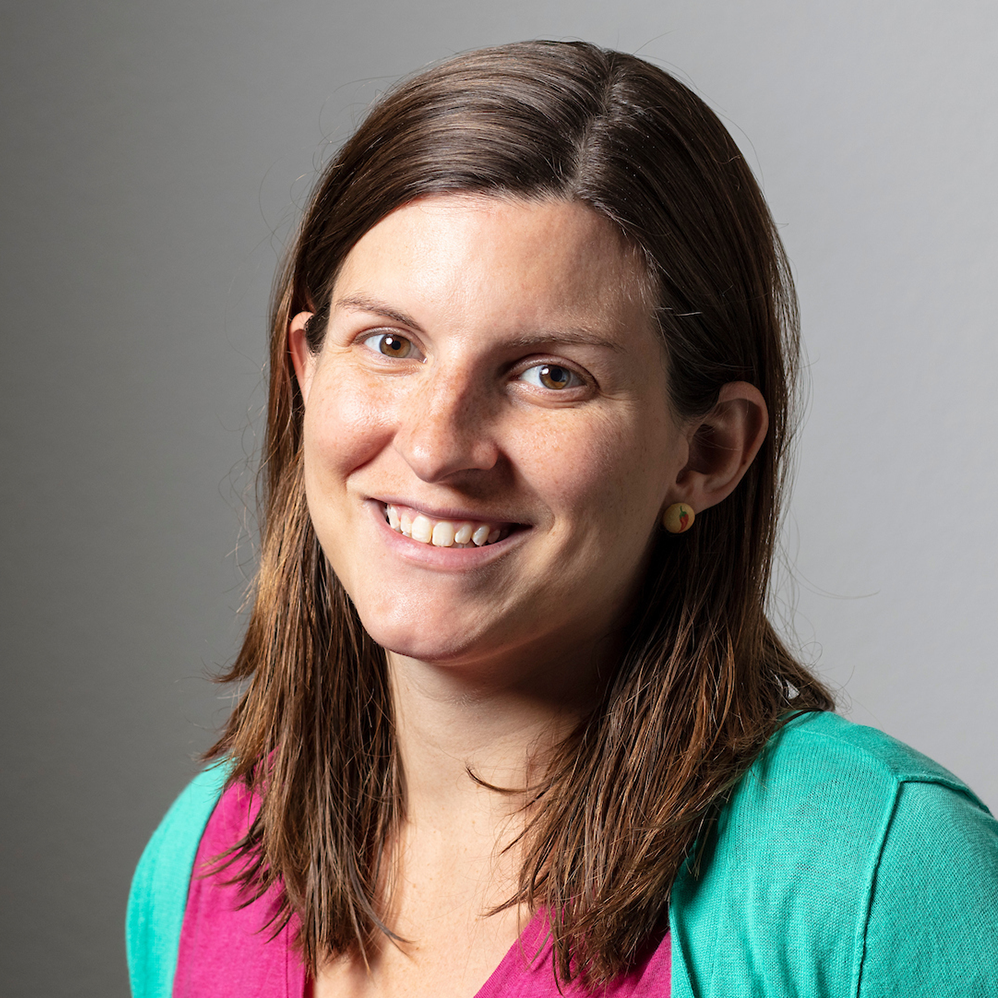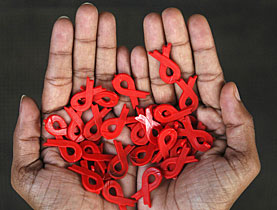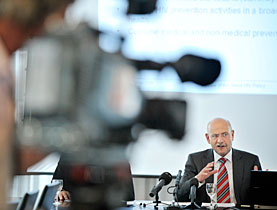
Swiss see highs and lows in Aids fight

There have been reasons for both optimism and pessimism at the International Aids Conference in Vienna, a Swiss delegate says.
Luciano Ruggia, from the Federal Health Office, said that the rising HIV epidemic in eastern Europe and the lack of human rights had been key topics at the meeting. Switzerland, at least, is on the right track with its Aids policy.
The six-day biennial conference, which ended on Friday and is the largest of its kind, brought together thousands of people working in the Aids field.
“Certain things are getting better but at the same time, certain things are getting worse,” Ruggia told swissinfo.ch from the meeting.
“So there’s no unique trend today. You see a growing epidemic in eastern Europe but you see some progress in other countries,” he added.
Eastern Europe’s epidemic, the fastest growing globally, is mainly among injecting drug users (IDUs). In Ukraine, for example, the 1.6 per cent HIV rate in the general population is the highest in Europe.
No needle exchanges
“There are harm reduction polices in eastern Europe and Russia but they are not implemented or accepted. Needle exchanges are not available. But if you don’t implement harm reduction, you will not be able to slow the rate of infection among IDUs like we were able to do,” explained Ruggia, who is Scientific Secretary of the Swiss National Aids Commission.
The lack of human rights for HIV/Aids sufferers was also highlighted at the conference.
For Ruggia, access to treatment should be considered a basic human right. It is also important for preventing the spread of the virus HIV, which causes Aids.
He added that discrimination and stigmatisation, such as against gays and homosexuals in India and certain African countries, were still rife and that these populations, which have a growing infection rate, often did not have access to treatment, prevention measures or testing.
Good Swiss news
On the positive side, the expert said, it was clear that Switzerland – having seen the situation and strategy in other countries – was “on the right track with the polices we have already implemented and that we are trying to develop”.
In November 2008 a United Nations report on Aids found that 50 people in Switzerland died of complications related to HIV infections. In 1995 the figure was 600.
Switzerland gave a pre-presentation of its new strategy, which also tackles the rising infection rates of sexually transmitted infections (STIs).
The strategy should be finalised in the next months and approved by cabinet on December 1.
Gel for women
Among the most reported developments at the conference was the announcement that scientists in South Africa had come up with a vaginal gel for women that cuts HIV infections.
Researchers said that during an experiment, the gel, which contains the Aids drug tenofir, lowered infection rates among 889 women by 50 per cent after one year of use, and by 39 per cent after two and a half years.
It is aimed at women whose partners refuse to wear condoms.
Giuseppe Pantaleo, the head of the Division of Immunology and Allergy at Lausanne University Hospital, who is an expert in Aids vaccines, told Swiss public radio that there had been important results in the fight against aids in the past three years. This included circumcisions for men, which reduced transmission and infection rates.
“Now with the microbicide gel we have managed to reduce the rates by 50 per cent, with vaccines we have managed to reduce them by 30-40 per cent,” said the professor, who also attended the Vienna meeting.
“So if you put all these strategies together, which you should in the near future, there could really be a substantial impact, with probably an effectiveness of reducing [transmission] of above 60-70 per cent.”
Funding issue
However, casting a long shadow over the conference have been concerns over the lack of funding from rich countries for both international Aids programmes and research.
In October donors will decide how much they will give to the Geneva-based Global Fund to Fight Aids, Tuberculosis and Malaria, to which Switzerland also contributes.
Its director Michel Kazatchkine says he is “really afraid” about whether the fund will receive the projected $20 billion (SFr20.1 billion) needed to continue the Aids battle for the next three years.
“We have demonstrated the feasibility. Countries have shown that they can massively scale up. The case is strong. The funding decision is a political decision for the leaders of this world, and a political decision is a choice,” he said.
Isobel Leybold-Johnson, swissinfo.ch
The meeting took place from July 18-23 in the Austrian capital, Vienna. Its aim was to build bridges between research, the political world, business figures, NGOs and those affected.
The main focus was on eastern Europe and central Asia, as well as on issues like treatment and discrimination.
The conference featured a glamorous Life Ball to raise funds for Aids sufferers. Among those who attended – and dashed for cover as they arrived because of a thunderstorm, were Whoopi Goldberg, former US president Bill Clinton and ex-tennis ace Boris Becker.
Thousands also attended a human rights march with singer Annie Lennox.
Around 25,000 participants from more than 100 countries were expected at the conference.
According to UNAIDS, around 60 million people worldwide have become infected with HIV, the virus which causes Aids, since the illness first came to light almost 30 years ago. Around 25 million have died.
In 2008 33.4 million people were HIV positive, and around 2 million died from Aids. Most infections take place at age 20-50. 2.1 million children under 15 live with the virus.
The most affected area is sub-Saharan Africa, followed by south and southeastern Asia and Latin America.
The Swiss Federal Health Office says that there are an estimated 20,000-30,000 people living with HIV in the country, of which around a quarter are unaware of the infection. Since the first statistics were kept in 1983, 6,982 people have died of Aids (March 2010 figures).
In 2009 642 people tested positive for HIV, 179 developed Aids.


In compliance with the JTI standards
More: SWI swissinfo.ch certified by the Journalism Trust Initiative










































You can find an overview of ongoing debates with our journalists here . Please join us!
If you want to start a conversation about a topic raised in this article or want to report factual errors, email us at english@swissinfo.ch.